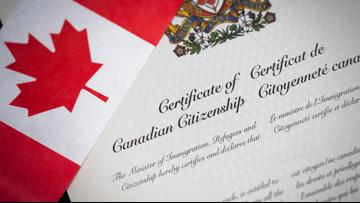Tax filing season is right around the corner, and many VERIFY readers have been sending us tax-related questions before the April 15 deadline.
VERIFY reader John wants to know if there is a limit on how much money a parent can give their child as a gift without having to pay taxes on it.
THE QUESTION
Is there a limit on how much money a parent can gift their child in a year without having to report it to the IRS?
THE SOURCES
THE ANSWER
Yes, there is a limit on how much money a parent can gift their child in a year without having to report it to the IRS. It’s $18,000.
WHAT WE FOUND
The IRS allows parents to give away a specific amount of money or property to their kids each year tax-free. This is known as the annual gift tax exclusion. In 2024, the annual limit to avoid the gift tax is $18,000, an increase from last year’s $17,000. Anything over this threshold must be reported to the IRS, though that doesn’t necessarily mean taxes would be owed.
The gift tax doesn’t just apply to parents gifting money to children. Instead, it’s a federal tax on the transfer of any type of money or property by one person to another person while receiving nothing, or less than full value, in return, according to the IRS. The donor is generally responsible for paying the gift tax, except under special circumstances.
In addition to the annual gift tax exclusion, the IRS allows a person to give away up to $13.61 million (as of 2024) in money or property throughout their lifetime. This is known as the lifetime exclusion. If a gift exceeds the annual exclusion limit, the difference is simply subtracted from the person’s lifetime exemption limit and no taxes are owed, according to financial technology company SmartAsset.
“The IRS has a gift tax limit, both for the amount you can give each year and for what you can give over the course of your life. If you go over those limits, you will have to pay a tax on the amount of gifts that are over the limit,” SmartAsset says.
The annual gift tax limit is per recipient; it isn’t the total amount a parent can give in a year. This means a parent can give $18,000 to one child and another $18,000 to another child without having to file a gift tax return in 2025, according to personal finance company NerdWallet. For married couples, spouses can each gift up to $18,000 to any one child, bringing the total to $36,000.
If a parent gives more than the annual gift tax amount, they’ll be required to submit IRS Form 709 when they file their federal income taxes. But NerdWallet says this doesn’t mean the parent will actually have to pay a gift tax that year; it just means they’ll have to disclose the gift to the IRS. That’s because “taxpayers typically only pay gift tax on the amounts that exceed the allotted lifetime exclusion.”
“If you exceed the annual gift tax exclusion, you must file a gift tax return with the IRS, and the excess of your contribution will be added toward your lifetime gift tax exclusion,” NerdWallet says. “Once you exhaust your lifetime exclusion, you may begin to owe gift taxes.”
For example, if a parent gives their child $40,000 as a gift, which surpasses the annual limit of $18,000, the additional $22,000 will have to be reported to the IRS, but the parent won’t have to immediately pay a tax on that gift. Instead, the IRS deducts that $22,000 from the lifetime exclusion pot, which would drop the remaining lifetime limit to $13.58 million.













